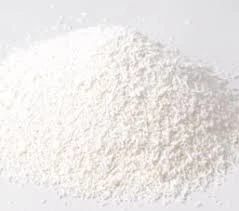
Manganese Fertilizers for Optimal Crop Growth and Soil Health Improvement
The Importance of Manganese Fertilizer in Agriculture
Manganese, a trace mineral, plays a crucial role in plant growth and development, making manganese fertilizer an essential component in modern agriculture. This article explores the importance of manganese fertilizer, its benefits, the symptoms of manganese deficiency in plants, and its proper application methods.
Understanding Manganese in Plant Physiology
Manganese is involved in several physiological processes in plants, including photosynthesis, respiration, nitrogen metabolism, and the synthesis of certain plant hormones. It acts as a co-factor for many enzymes and is crucial for chlorophyll formation. Manganese is largely absorbed by plant roots in the form of Mn²⁺ ions and is transported throughout the plant to various tissues.
The Role of Manganese in Plant Growth
1. Photosynthesis Manganese is vital for the photolytic water-splitting reaction in photosynthesis. It helps in the formation of oxygen from water and contributes to the overall process of converting light energy into chemical energy, which ultimately supports plant growth.
2. Enzyme Activation Many enzymes involved in metabolic processes require manganese as a co-factor. These enzymes aid in the oxidative processes and are essential for converting nutrients into forms that plants can use.
3. Disease Resistance Adequate manganese levels in plants have been linked to improved resistance to certain diseases. By promoting healthy growth and development, manganese can help plants better withstand the stresses posed by pathogens.
Symptoms of Manganese Deficiency
Identifying manganese deficiency is critical for maintaining healthy crops. Common symptoms include
- Interveinal Chlorosis One of the early signs of manganese deficiency is the yellowing of leaves while the veins remain green. This is particularly noticeable in younger leaves. - Stunted Growth A lack of manganese can cause reduced growth rates, leading to smaller plants and lower yields. - Brown Spots In severe cases, plants may develop necrotic spots on the leaves, leading to overall decline in plant health.
Sources of Manganese Fertilizers
manganese fertilizer

Manganese fertilizers are available in various forms, including
2. Manganese Oxide While it has a lower solubility, manganese oxide serves as a slow-release source of manganese.
3. Chelated Manganese This form enhances the availability of manganese in soil with high pH or in alkaline conditions, ensuring that plants can absorb it efficiently.
Application Methods
The application of manganese fertilizer should be done thoughtfully to achieve optimal results. Common methods of application include
- Soil Application Broadcasting manganese sulfate or chelated manganese before planting can provide an immediate source of manganese as the crop develops.
- Foliar Spray For quick correction of deficiencies, foliar application of manganese can deliver nutrients directly to the leaves, allowing for rapid absorption.
- Fertigation This method involves applying manganese through irrigation systems, ensuring that plants receive a consistent supply of the nutrient.
Conclusion
Manganese fertilizer is an indispensable resource for farmers looking to maximize crop productivity and maintain soil health. By understanding its role in plant growth, recognizing deficiency symptoms, and applying the correct forms of manganese fertilizer, farmers can significantly enhance their yields and the overall quality of their produce. As agriculture continues to advance, the importance of micronutrients such as manganese must not be overlooked, as they are vital for sustainable farming practices and food security. In conclusion, the effective use of manganese fertilizers is essential for healthy and robust plant growth, ultimately contributing to successful agricultural outcomes.
-
Pure Sodium Dichloroisocyanurate Dihydrate | Powerful DisinfectantNewsAug.29,2025
-
Industrial Chemicals: Quality & Purity for Every IndustryNewsAug.28,2025
-
Nitrile Rubber Honoring Strict Production StandardsNewsAug.22,2025
-
Aspartame Ingredients Honoring Food Safety ValuesNewsAug.22,2025
-
Fertilizer for Balanced Plant NutritionNewsAug.22,2025
-
Cyanide Gold Processing with High Purity AdditivesNewsAug.22,2025
-
Formic Acid in Textile Dyeing ApplicationsNewsAug.22,2025
Hebei Tenger Chemical Technology Co., Ltd. focuses on the chemical industry and is committed to the export service of chemical raw materials.
-

view more DiethanolisopropanolamineIn the ever-growing field of chemical solutions, diethanolisopropanolamine (DEIPA) stands out as a versatile and important compound. Due to its unique chemical structure and properties, DEIPA is of interest to various industries including construction, personal care, and agriculture. -

view more TriisopropanolamineTriisopropanolamine (TIPA) alkanol amine substance, is a kind of alcohol amine compound with amino and alcohol hydroxyl, and because of its molecules contains both amino and hydroxyl. -

view more Tetramethyl Thiuram DisulfideTetramethyl thiuram disulfide, also known as TMTD, is a white to light-yellow powder with a distinct sulfur-like odor. It is soluble in organic solvents such as benzene, acetone, and ethyl acetate, making it highly versatile for use in different formulations. TMTD is known for its excellent vulcanization acceleration properties, which makes it a key ingredient in the production of rubber products. Additionally, it acts as an effective fungicide and bactericide, making it valuable in agricultural applications. Its high purity and stability ensure consistent performance, making it a preferred choice for manufacturers across various industries.





